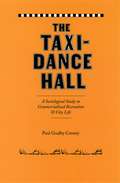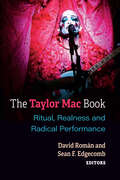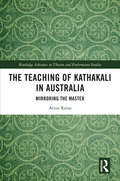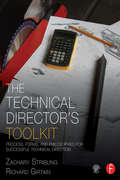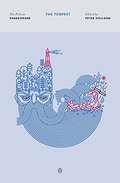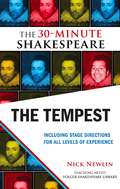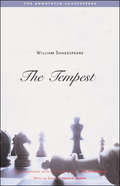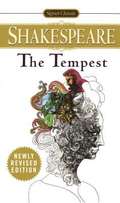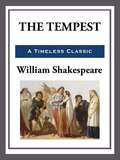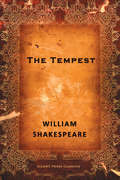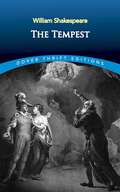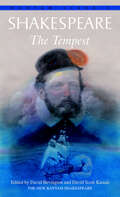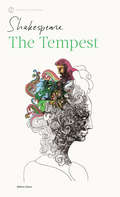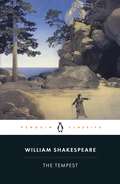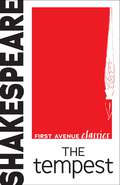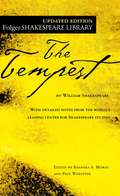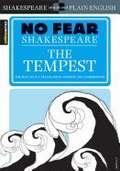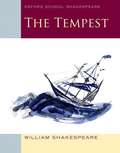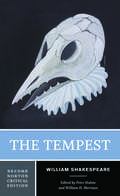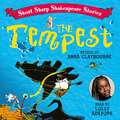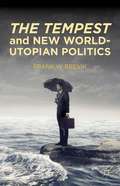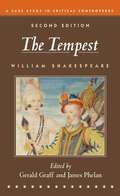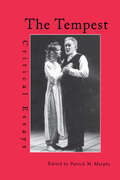- Table View
- List View
The Taxi-Dance Hall: A Sociological Study in Commercialized Recreation and City Life
by Paul G. CresseyFirst published in 1932, The Taxi-Dance Hall is Paul Goalby Cressey’s fascinating study of Chicago’s urban nightlife—as seen through the eyes of the patrons, owners, and dancers-for-hire who frequented the city’s notoriously seedy “taxi-dance” halls. Taxi-dance halls, as the introduction notes, were social centers where men could come and pay to dance with “a bevy of pretty, vivacious, and often mercenary” women. Ten cents per dance was the usual fee, with half the proceeds going to the dancer and the other half to the owner of the taxi-hall. Cressey’s study includes detailed maps of the taxi-dance districts, illuminating interviews with dancers, patrons, and owners, and vivid analyses of local attempts to reform the taxi-dance hall and its attendees. Cressey’s study reveals these halls to be the distinctive urban consequence of tensions between a young, diverse, and economically independent population at odds with the restrictive regulations of Prohibition America. Thick with sexual vice, ethnic clashes, and powerful undercurrents of class, The Taxi-Dance Hall is a landmark example of Chicago sociology, perfect for scholars and history buffs alike.
The Taylor Mac Book: Ritual, Realness and Radical Performance (Triangulations: Lesbian/Gay/Queer Theater/Drama/Performance)
by Sean Edgecomb David RomanThis is the first book to dedicate critical attention to the work of influential theater-maker Taylor Mac. Mac is particularly celebrated for the historic performance event A 24-Decade History of Popular Music, in which Mac, in fantastical costumes designed by collaborator Machine Dazzle, sang the history of the United States for 24 straight hours in October 2016. The MacArthur Foundation soon thereafter awarded their “genius” award to a “writer, director, actor, singer, and performance artist whose fearlessly experimental works dramatize the power of theater as a space for building community . . . [and who] interacts with the audience to inspire a reconsideration of assumptions about gender, identity, ethnicity, and performance itself.” Featuring essays, interviews, and commentaries by noted critics and artists, the volume examines the vastness of Mac’s theatrical imagination, the singularity of their voice, the inclusiveness of their cultural insights and critiques, and the creativity they display through stylistic and formal qualities and the unorthodoxies of their personal and professional trajectories. Contributors consider the range of Mac’s career as a playwright, performer, actor, and singer, expanding and enriching the conversation on this much-celebrated and deeply resonant body of work.
The Teaching of Kathakali in Australia: Mirroring the Master (Routledge Advances in Theatre & Performance Studies)
by Arjun RainaThis book tells the story of teaching Kathakali, a seventeenth century Indian dance-drama, to contemporary performers in Australia. A rigorous analysis and detailed documentation of the teaching of multiple learners in Melbourne, both in the group workshop mode and one-on-one, combined with the author’s ethnographic research in India, leads to a unique insight into what the author argues persuasively is at the heart of the art’s aesthetic- a practical realisation of the theory of rasa as first articulated in the ancient Sanskrit treatise on drama The Natyashastra. The research references the latest discoveries in neuroscience on ‘mirror neurons’ and argues for a reconceptualization of Kathakali’s imitative methodology, advancing it from the reductive category of ‘mimicry’ to a more contemporary and complex mirroring which is where its value lies in Australian actor performer training. The Teaching of Kathakali in Australia will be of great interest to students and scholars of theatre and dance, intercultural actor training, practice-led research, and interdisciplinary studies of neuroscience and performance.
The Technical Director's Toolkit: Process, Forms, and Philosophies for Successful Technical Direction (The Focal Press Toolkit Series)
by Zachary Stribling Richard GirtainIn the world of theatre, the technical director is responsible for overseeing the safe and efficient realization and implementation of scenery for the stage. The Technical Director’s Toolkit is the first book to address every nut and bolt of this multifaceted job, guiding you though the step-by-step processes of technical direction and the responsibilities of the TD in the mounting of a theatrical production. Leadership, management, relationship building, personal responsibility, and problem solving are addressed, showing you not only how to become a more efficient and effective TD, but also how to be a collaborative member of a production team that artists will seek to work with again and again. The book also addresses scene shop design, facility repair and maintenance, and finishes with a brief overview of other areas of technical theatre that help round out the far reaching skill set of a successful TD.
The Tempest
by William Shakespeare Stephen Orgel Peter Holland A. R. BraunmullerThe legendary Pelican Shakespeare series features authoritative and meticulously researched texts paired with scholarship by renowned Shakespeareans. Each book includes an essay on the theatrical world of Shakespeare's time, an introduction to the individual play, and a detailed note on the text used. Updated by general editors Stephen Orgel and A. R. Braunmuller, these easy-to-read editions incorporate over thirty years of Shakespeare scholarship undertaken since the original series, edited by Alfred Harbage, appeared between 1956 and 1967. With stunning new covers, definitive texts, and illuminating essays, the Pelican Shakespeare will remain a valued resource for students, teachers, and theater professionals for many years to come.This edition of The Tempest is edited with an introduction and notes by Peter Holland.For more than seventy years, Penguin has been the leading publisher of classic literature in the English-speaking world. With more than 1,700 titles, Penguin Classics represents a global bookshelf of the best works throughout history and across genres and disciplines. Readers trust the series to provide authoritative texts enhanced by introductions and notes by distinguished scholars and contemporary authors, as well as up-to-date translations by award-winning translators.From the Trade Paperback edition.
The Tempest
by Nick NewlinThe Tempest: The 30-Minute Shakespeare offers eight scenes from this rich comedy. Beginning with the magical storm and shipwreck, this adaptation includes the uproarious discovery of the monster Caliban and his plot to kill Prospero. Included are the heartfelt marriage vows between Ferdinand and Miranda, the disguised antics of fairy Ariel, and Prospero's poetic abjuration of his rough magic. The edition includes a preface by Nick Newlin containing helpful advice on how to put on a Shakespeare performance in a high school class with novice actors as well as an appendix with suggestions for the specific play and recommendations for further resources.
The Tempest
by William ShakespeareThis bewitching play, Shakespeare's final work, articulates a wealth of the playwright's mature reflections on life and contains some of his most familiar and oft-quoted lines. The story concerns Miranda, a lovely young maiden, and Prospero, her philosophical old magician father, who dwell on an enchanted island, alone except for their servants — Ariel, an invisible sprite, and Caliban, a monstrous witch's son. Into their idyllic but isolated lives comes a shipwrecked party that includes the enemies who usurped Prospero's dukedom years before, and set him and his daughter adrift on the ocean. Also among the castaways is a handsome prince, the first young man Miranda has ever seen. Comedy, romance, and reconciliation ensue, in a masterly drama that begins with a storm at sea and concludes in joyous harmony.
The Tempest
by William ShakespeareThis critical edition of William Shakespeare's contains the text of the First Folio (1623), accompanied by detailed explanatory annotations. Next, a collection of works by Ovid, William Strachey, and others provides context for its major themes. Eighteen interpretive essays address such topics as the character of Caliban and the symbolism of shipwreck. Finally, 17 re-scriptings of the playfrom Percy Shelley's "With a Guitar, to Jane" to Ted Hughes's "Setebos"are presented. Annotation ©2004 Book News, Inc. , Portland, OR (booknews. com)
The Tempest
by William ShakespeareProspero, wise Duke of Milan, has been deposed by Antonio, his wicked brother, and exiled with his daughter Miranda to a mysterious island. But Prospero possesses supernatural powers. This edition includes Shakespeare's sources for the play, dramatic criticism from past and present, and a comprehensive stage and screen history of notable actors, directors, and productions of the play.Includes notes and introduction by Sylvan Barnet and Robert Langbaum
The Tempest
by William ShakespeareThe Tempest is a play by William Shakespeare, believed to have been written in 1610-11, and thought by many critics to be the last play that Shakespeare wrote alone. It is set on a remote island, where Prospero, the exiled Duke of Milan, plots to restore his daughter Miranda to her rightful place, using illusion and skillful manipulation. He conjures up a storm, the eponymous tempest, to lure to the island his usurping brother Antonio and the complicit Alonso, King of Naples. There his machinations bring about the revelation of Antonio's low nature, the redemption of Alonso, and the marriage of Miranda to Alonso's son, Ferdinand.
The Tempest
by William ShakespeareThe Duke of Milan attempts to recapture his throne by conjuring a tempest that lures his deceitful brother, Prospero, to the duke's island hideaway.
The Tempest
by William ShakespeareThis bewitching play, Shakespeare's final work, articulates a wealth of the playwright's mature reflections on life and contains some of his most familiar and oft-quoted lines. The story concerns Miranda, a lovely young maiden, and Prospero, her philosophical old magician father, who dwell on an enchanted island, alone except for their servants -- Ariel, an invisible sprite, and Caliban, a monstrous witch's son.Into their idyllic but isolated lives comes a shipwrecked party that includes the enemies who usurped Prospero's dukedom years before, and set him and his daughter adrift on the ocean. Also among the castaways is a handsome prince, the first young man Miranda has ever seen. Comedy, romance, and reconciliation ensue, in a masterly drama that begins with a storm at sea and concludes in joyous harmony. Students, poetry lovers, and drama enthusiasts will treasure this convenient, modestly priced edition of one of Shakespeare's greatest plays and one of literature's finest comedies.
The Tempest
by William ShakespearePlot synopsis of this classic is made meaningful with analysis and quotes by noted literary critics, summaries of the work's main themes and characters, a sketch of the author's life and times, a bibliography, suggested test questions, and ideas for essays and term papers.
The Tempest
by William ShakespeareProspero, sorcerer and rightful Duke of Milan, along with his daughter Miranda, has lived on an island for many years since his position was usurped by his brother Antonio. <P><P>Then, as Antonio's ship passes near the island one day, Prospero conjures up a terrible storm...This play, combining elements of both tragedy and comedy, is believed by some to be the last Shakespeare wrote on his own, as well as one of his most fascinating works. The Signet edition also features an overview of Shakespeare's life and times, commentary by William Strachey, Montaigne, and others, and a stage and screen history, among other special content.
The Tempest
by William Shakespeare'The magic in The Tempest is real ... It contains a great many unanswered questions' Margaret AtwoodA storm rages. Prospero and his daughter watch from their desert island as a ship carrying the royal family is wrecked. Miraculously, all on board survive. Plotting, mistaken identities, bewitching love and enchantment follow as the travellers explore this mysterious place of spirits and monsters, and discover that all is not as it seems. Shakespeare's late, great play is a work filled with marvels, music and strangeness, fully exploiting the power of language and the magic of theatre.Used and Recommended by the National TheatreGeneral Editor Stanley WellsEdited with an Introduction by Martin Butler
The Tempest (First Avenue Classics ™)
by William ShakespeareA tempest shipwrecks Alonso, the king of Naples; Antonio, the duke of Milan; and several others on a small island in the Mediterranean. Little do they know that the storm was conjured by Prospero, the former duke of Milan, who lives in exile on the island with his daughter Miranda, his slave Caliban, and his spirit servant Ariel. As Prospero manipulates the events that take place on the island using his books and magic, William Shakespeare invites the reader to examine the playwright's powers in the theatrical world. The fantastical, romantic play—believed to be the last one Shakespeare wrote alone—was published in 1623, after his death. This unabridged version is taken from an edition published in 1863.
The Tempest (Folger Shakespeare Library)
by William ShakespeareThe authoritative edition of The Tempest from The Folger Shakespeare Library, the trusted and widely used Shakespeare series for both students and general readers.Putting romance onstage, The Tempest gives us a magician, Prospero, a former duke of Milan who was displaced by his treacherous brother, Antonio. Prospero is exiled on an island, where his only companions are his daughter, Miranda, the spirit Ariel, and the monster Caliban. When his enemies are among those caught in a storm near the island, Prospero turns his power upon them through Ariel and other spirits. The characters exceed the roles of villains and heroes. Prospero seems heroic, yet he enslaves Caliban and has an appetite for revenge. Caliban seems to be a monster for attacking Miranda, but appears heroic in resisting Prospero, evoking the period of colonialism during which the play was written. Miranda&’s engagement to Ferdinand, the Prince of Naples and a member of the shipwrecked party, helps resolve the drama. This edition includes: -Freshly edited text based on the best early printed version of the play -Full explanatory notes conveniently placed on pages facing the text of the play -Scene-by-scene plot summaries -A key to the play&’s famous lines and phrases -An introduction to reading Shakespeare&’s language -An essay by a leading Shakespeare scholar providing a modern perspective on the play -Fresh images from the Folger Shakespeare Library&’s vast holdings of rare books -An annotated guide to further reading Essay by Barbara A. Mowat The Folger Shakespeare Library in Washington, DC, is home to the world&’s largest collection of Shakespeare&’s printed works, and a magnet for Shakespeare scholars from around the globe. In addition to exhibitions open to the public throughout the year, the Folger offers a full calendar of performances and programs. For more information, visit Folger.edu.
The Tempest (No Fear Shakespeare)
by William Shakespeare John Crowther SparkNotes StaffNo Fear : The Tempest
The Tempest (Oxford School Shakespeare)
by William Shakespeare Roma GillOxford School Shakespeare is an acclaimed edition especially designed for students, with accessible on-page notes and explanatory illustrations, clear background information, and rigorous but accessible scholarly credentials. The Tempest is a popular text for study by secondary students the world over. This edition includes illustrations, preliminary notes, reading lists (including websites) and classroom notes.
The Tempest (Second Edition): A Norton Critical Edition
by William Shakespeare“Presenting an utterly reliable text, together with a rich collection of social, historical, and performance-based materials, this edition illuminates our understanding of the play as it has been interpreted traditionally, while simultaneously pointing the way to innovative, revisionist readings for the future.” —S. P. Cerasano, Colgate University “The Norton Critical Tempest is a truly wonderful resource: it illuminates Shakespeare’s most open-ended play with a wealth of richly suggestive contextual materials—on magic, on human perfectibility, on travel and alien worlds, on colonial domination, on religion and politics. Providing a well-selected sampling of interpretive criticism and artistic rewritings, the edition will inspire students to become researchers and re-creators themselves as they bring these texts into conversation with Shakespeare’s magical and enigmatic creation.” —Lynne Magnusson, University of Toronto This Norton Critical Edition includes: • The First Folio (1623) text, accompanied by the editors’ preface and detailed explanatory annotations. • A rich collection of source materials by Ovid, Giovanni Pico della Mirandola, King James I, Michel de Montaigne, and others centered on the play’s major themes of magic, witchcraft, politics, religion, geography, and travel. • Seventeen wide-ranging scholarly essays, seven of them new to the Second Edition. • Nineteen rescriptings that speak to The Tempest’s enduring inspiration and provocation for writers from Thomas Heywood and Percy Bysshe Shelley to Aimé Césaire and Ted Hughes. • A Selected Bibliography. About the Series Read by more than 12 million students over fifty-five years, Norton Critical Editions set the standard for apparatus that is right for undergraduate readers. The three-part format—annotated text, contexts, and criticism—helps students to better understand, analyze, and appreciate the literature, while opening a wide range of teaching possibilities for instructors. Whether in print or in digital format, Norton Critical Editions provide all the resources students need.
The Tempest (Short, Sharp Shakespeare Stories #28)
by Anna ClaybourneBe not afeard; the isle is full of noises...A powerful storm, a dramatic shipwreck, an enchanted island, a sorcerer's daughter and a handsome prince... Listen on, through magic and mystery, to discover the spell-binding story at the heart of The Tempest, one of Shakespeare's best-loved plays.As well as the story, this audiobook contains information about the background to The Tempest, its major themes, language, and Shakespeare's life during the time he was writing the play. Magic, and its meaning in 16th century England, are also examined, to give some context in which the play was written.The Short, Sharp Shakespeare series consists of six books that retell Shakespeare's most famous plays in modern English. Fun sound effects and atmospheric music accompany each narration, making them a great introduction to "the Bard" for children.(P) 2023 Hodder & Stoughton Limited
The Tempest (The New Cambridge Shakespeare)
by William Shakespeare David LindleyThe Tempest is one of the most suggestive, yet most elusive of all Shakespeare's plays, and has provoked a wide range of critical interpretations. It is a magical romance, yet deeply and problematically embedded in seventeenth-century debates about authority and power. In this updated edition, David Lindley has thoroughly revised the introduction and reading list to take account of the latest directions in criticism and performance. Including a new section on casting in recent productions, Lindley's introduction explores the complex questions this raises about colonization, racial and gender stereotypes, and the nature of the theatrical experience. Careful attention is also given to the play's dramatic form, stagecraft, and use of music and spectacle, to demonstrate its uniquely experimental nature.
The Tempest and New World-Utopian Politics
by Frank W. BrevikThis study on New World-utopian politics in The Tempest traces paradigm shifts in literary criticism over the past six decades that have all but reinscribed the text into a political document. This book challenges the view that the play has a dominant New World dimension and demonstrates through close textual readings how an unstable setting at the same time enables and effaces discursively over-invested New World interpretations. Almost no critical attention has been paid to the play's vacuum of power, and this work interprets pastoral, utopian, and 'American' tensions in light of the play's forever-ambiguous setting as well as through a 'presentist' post-1989 lens, an oft-neglected historical and political paradigm shift in Shakespeare criticism.
The Tempest: A Case Study in Critical Controversy
by William ShakespeareThis critical edition of Shakespeare's The Tempest contains the play and 21 additional selections representing major critical and cultural controversies surrounding the work providing you with more insight into the play's critical issues and cultural debates about literature itself.
The Tempest: Critical Essays (Shakespeare Criticism #Vol. 21)
by Patrick M. MurphyThe Tempest: Critical Essays traces the history of Shakespeare's controversial late romance from its early reception (and adaptation) in the seventeenth and eighteenth centuries to the present. The volume reprints influential criticism, and it also offers eight originalessays which study The Tempest from a variety of contemporary perspectives, including cultural materialism, feminism, deconstruction, performance theory, and postcolonial studies. Unlike recent anthologies about The Tempest which reprint contemporary articles along with a few new essays, this volume contains a mixture of old and new materials pertaining to the play's use in the theater and in literary history.
